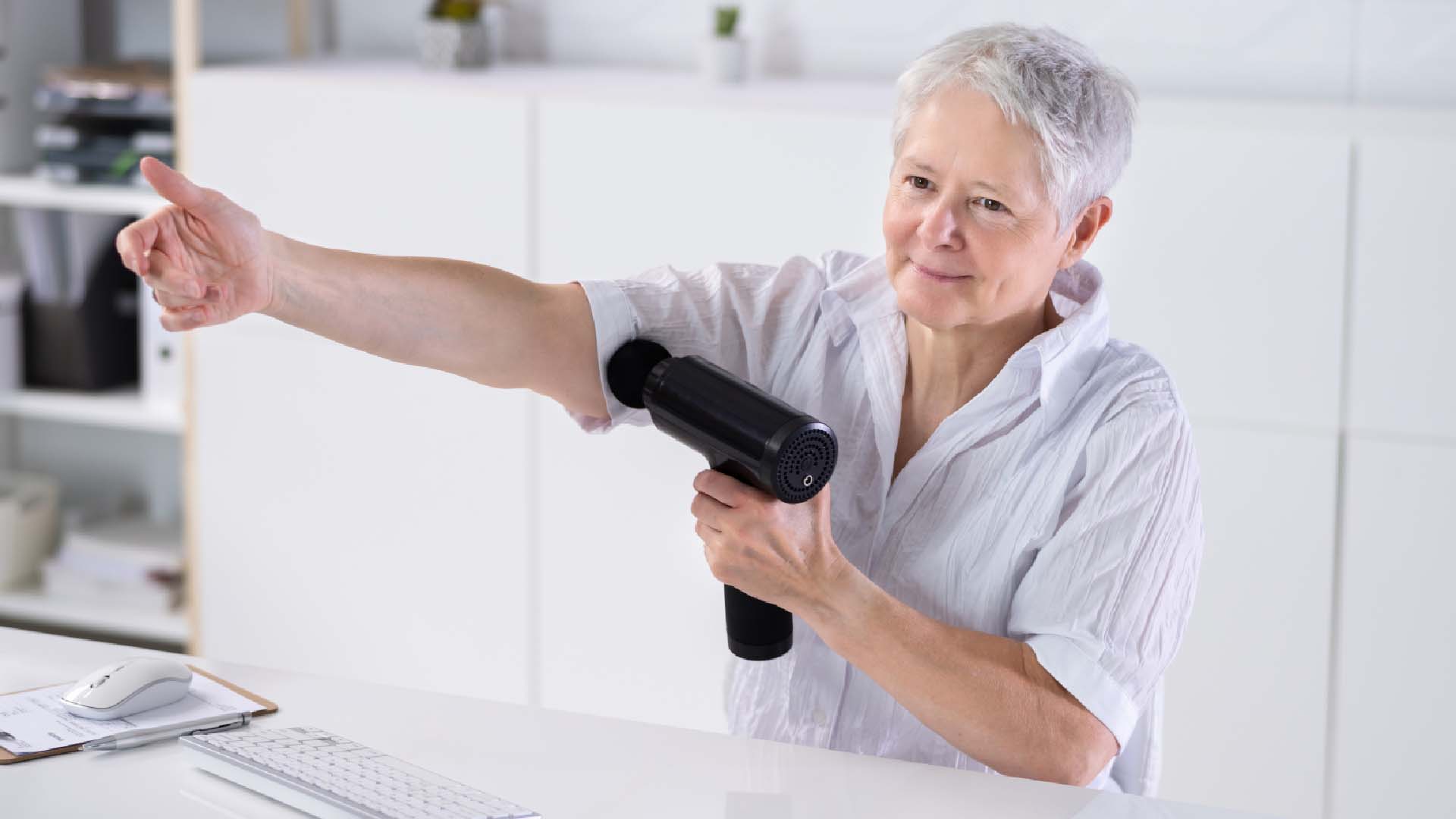
What’s the deal with massage guns? Are they just another gadget that will sit gathering dust after a few weeks? Or can they genuinely enhance your health and well-being, like a smartwatch or fitness tracker?
The massage gun has come a long way in a relatively short time. Once something of a niche product, it’s a growing market with an increasing number of brands and products.
Elite sports teams, athletes and celebrities are now ambassadors for a range of massage gun brands – though of course, celebrity endorsement doesn’t automatically mean something’s any good.
We explain what massage guns are, and whether they live up to the many promises they make.
Massage guns use ‘percussive’ therapy to massage the muscles. This means rapid and repetitive pressure is applied to the muscle you are working on. The idea is that this can replicate some of the benefits of regular massage, without the candles and soft music. (Although we won’t stop you from doing that at home if you want to.)
Jo Kelly is the Head of Soft Tissue Therapy at Pure Sports Medicine. She tells us: “Massage guns work using vibrations to relax and loosen tight or overused muscles. They use percussion therapy which creates a vibration through the muscle, increasing circulation and in turn reducing inflammation.”
The percussive strikes, it is claimed, help to reduce soreness by increasing blood flow and improving lymphatic drainage. This has obvious appeal for anyone who has experienced the dreaded DOMS (delayed onset muscle soreness, the aches you get a day or two after exercising).
But they also claim to offer a wealth of other benefits, whether you are a regular exerciser or not.
Massage guns aim to provide muscle relaxation, reduce tension and increase blood flow to the area being worked on,” according to Kelly.
We also spoke to Advanced Personal Trainer Chris Zaremba, founder of Fitness Over Fifty.
He said: “Massage generally is good for the body. Stimulating activity in a muscle drives blood, which carries oxygen, into the muscle. Sometimes it’s hard to massage yourself: for some muscles a gun may be useful.”
The main claims put forward by massage gun manufacturers are as follows:
While massage is often considered a tool for relaxation, using a massage gun before exercise can potentially improve performance. Think of it like a warm-up routine: in theory, it increases blood flow, oxygen, and nutrients to the muscles, and allows for a greater range of motion.
One benefit of using a massage gun before exercising is that it can potentially reduce the risk of injury in the first place.
Activating your muscles as part of your regular warm-up routine means they have greater flexibility, reducing the risk of you tweaking something when you’re out running, for example.
Accelerated recovery is one reason why massage guns appeal to athletes, but in theory, it can be just as beneficial for us non-professionals.
As with traditional massage, stimulating the muscles improves blood flow and increases oxygen circulation in the targeted area.
In turn, this may help reduce muscle soreness, allowing you to get back into action faster.
Massage therapy is often used to help with aches and pains, and massage guns can potentially offer many of the same benefits.
As well as alleviating DOMS, it’s been suggested that massage in general can be effective in managing symptoms of conditions such as fibromyalgia, arthritis, and sciatica.
If this applies to you, we’d recommend speaking to your doctor before using a massage gun. But even for general aches and pains, massage may be beneficial.
Whether you exercise regularly, spent too long doing the gardening last weekend, or have a sore neck and shoulders from sitting down at your desk for too long.
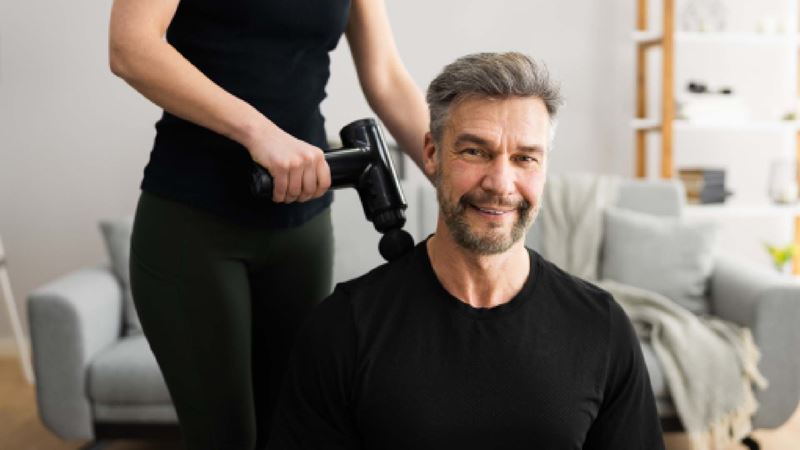
If you’ve read any of our articles about sleep, you’ll already know how important a good night's rest is. According to a study commissioned by Therabody (one of the best-known manufacturers of massage guns) these devices can also boost the quality of your sleep.
Participants used a Theragun Elite massage gun 30 minutes before bed, and immediately after exercise, for two weeks. Results found that 87% of participants fell asleep, on average, four minutes and fifteen seconds faster, and 70% reported fewer sleep disturbances through the night.
Now, a study commissioned by a company who wants to sell you a massage gun has some obvious conflicts of interest, but there are other studies that suggest traditional massage can be effective in improving quality and duration of sleep.
If you want to focus on one specific knot or muscle group, then a massage gun can be used as and when you feel you need it. According to Therabody, a massage gun only needs to be used for a few minutes at a time. This is far faster than a typical massage, and much more convenient.
In cost terms, while the initial outlay for a massage gun may be more than the cost of a massage, (they can cost several hundred pounds depending on the model) it’s a one-off cost. You can also buy cheaper massage guns for less than £100. Regularly going for a full body massage will eventually cost far more, and a massage gun could last for years.
There are plenty of claims about all the wonderful things a massage gun can do for you. But what does the expert think?
Despite all the potential benefits we’ve listed above, massage guns are still a relatively new technology, so the evidence for their effectiveness is limited. Kelly tells us:
“Massage guns have become a very popular tool for many people over the last few years but there isn’t a great deal of evidence behind the use of them compared to other forms of massage therapy. There has been a lot of research done into the effectiveness of massage but their mechanism is only partially understood.”
They can potentially be helpful for anyone who wants to massage themselves.
Kelly says: “Like with other massage therapy tools, for example foam rollers and massage balls, massage guns provide the opportunity for people to engage in their own recovery, which is always going to be a good thing.”
The main risk with massage guns comes from using them incorrectly. It’s important to note that massage guns should never be used on sensitive areas, bones or joints, or open wounds, for example.
According to Kelly: “If used incorrectly, massage guns can be detrimental to recovery and can cause damage to the muscles and tissues being worked on, like bruising and soreness. There are specific areas that should be avoided completely when using massage guns.
“It is always worth doing some research and speaking with a physio or soft tissue therapist before using them, to ensure you will use them correctly.”
Zaremba echoes these thoughts: “Massage guns can cause damage if used in the wrong place, for example a bone or a joint. You’re unlikely to cause damage by rubbing yourself with your hand, but a massage gun, if used inappropriately, can.”
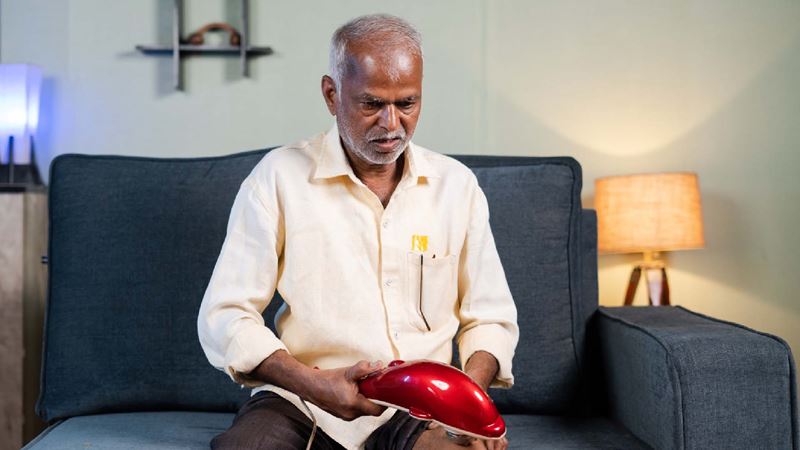
We asked Kelly for her advice on using these devices. She told us:
“Massage guns can be used by most, but it’s usually not advised for anyone under 18, as well as anyone with chronic pain. They also shouldn’t be used on any broken skin or open wounds. Always read all contraindications before using massage guns.”
Contraindications are injuries and conditions where massage could actually do more harm than good. Again, if you aren’t sure, always consult your doctor first.
Massage guns can be quite powerful, so make sure you don’t overdo it by using them in the same place for too long. Kelly offers the following tips:
“It is advised to use them up to two to three times a day. They all come with instructions on how best to use them and how often, and you can always speak to a professional to get some advice.
“It is also recommended to use them on a specific area for no longer than two minutes, and constantly keep them moving rather than holding it on a specific point for a long time.”
The cost of massage guns varies, and a lot of factors influence their price. In general, the higher the price, the more features, and usually, the higher the quality of the product. The main points to look for are battery life, noise, and build quality. You may also want to consider weight, as some massage guns are quite heavy.
A top of the range massage gun such as the Theragun Pro 5th Generation (Therabody, £499) has features such as a built-in screen to guide you through your massage routines, 150-minute battery life, and a variety of different attachments for different treatments.
At the other end of the spectrum, there are massage guns available for less than £100, such as the Wahl Deep Tissue Massager (Wahl, £79.99). These will typically offer fewer features but can be suitable if you aren’t worried about all the extras.
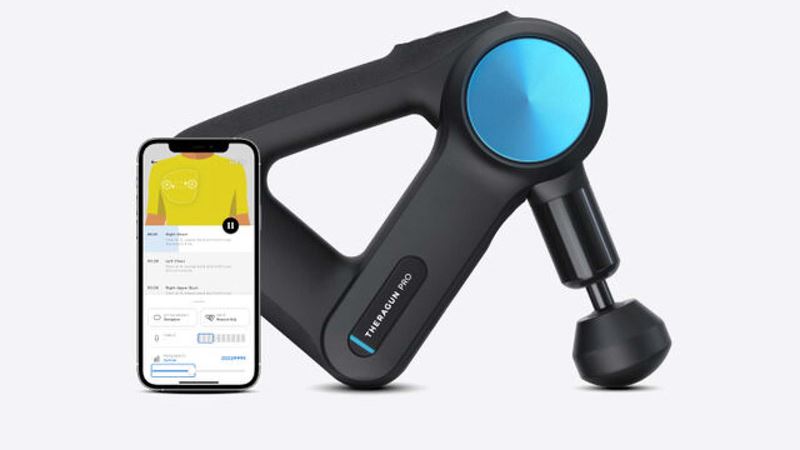
If you’re looking for something that would be suitable for serious athletes, or just like having the best of everything, then the Theragun Pro 5th Generation is a premium model.
As we mentioned above, it offers a wide range of attachments for customising your massage, access to visually guided routines on the device, as well as the Therabody app. It also has a brushless motor to make it quieter, and an ergonomic design to make it easier to reach any aches and pains.
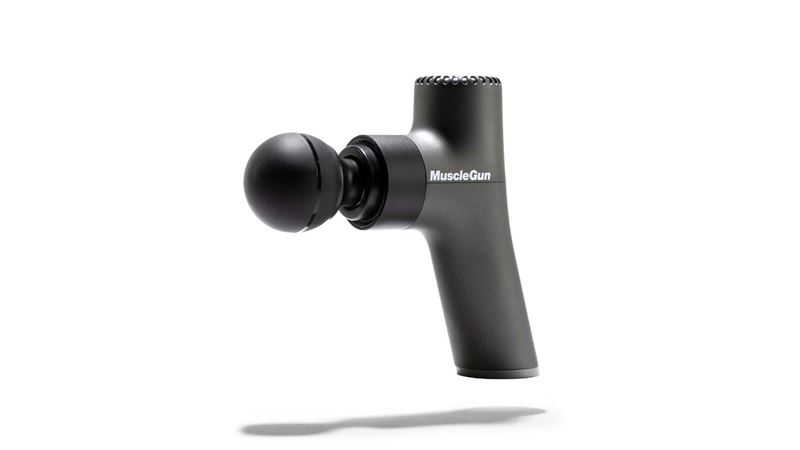
If you don’t want to spend so much, or you’re looking for something smaller and lighter, then the Muscle Gun Carbon Go (Muscle Gun, £169.99) is an option. It weighs 0.51kg and is roughly the same height as a mobile phone, so it’s much easier to take with you, for example if you travel regularly.
Like the Theragun Pro, this also has a dedicated app to help guide you while using it. It’s also a lot cheaper, coming in at under £200.
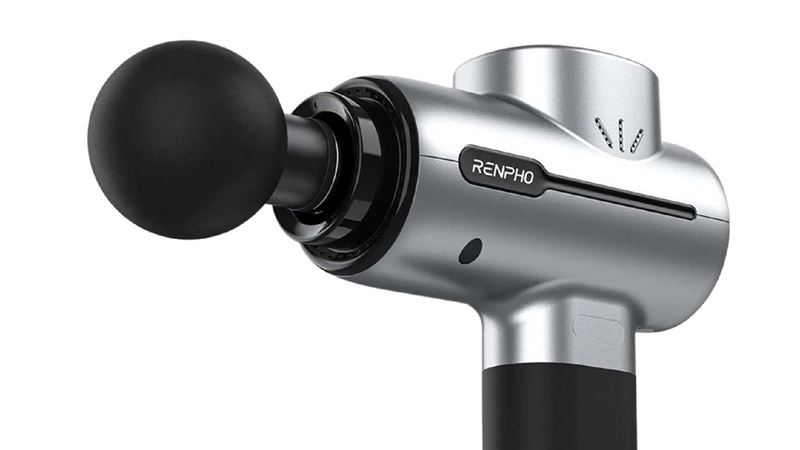
Finally, if you want something relatively cheap and cheerful, then look at the Renpho R3 massage gun (Renpho £109.99). It offers excellent 3.5-hour battery life, weighs 0.68kg, and is compact. It comes with five different attachments for targeting different muscle groups too.
Whether you are a fitness enthusiast, or you’re simply noticing a few more aches and pains than you used to, a massage gun can be a helpful tool in reducing stiffness and soreness and helping to prevent injury. This is especially true if you already pay for massage treatment and want something quicker and more convenient.
In the right hands, a massage gun may offer some benefits. On the other hand, massage guns, if used incorrectly, could end up doing more harm than good. Make sure you follow any instructions provided by the manufacturer, and if you have any doubts, consult a physiotherapist, doctor or massage therapist to make sure you are focusing on the correct parts of your body.
There are other methods, such as a foam roller, that are even cheaper than a massage gun, and might have a lower risk of causing injury. It’s also worth considering that a massage gun may not be able to replicate a skilled professional.
It can be worth thinking about what it is that you want from a massage – if part of the benefit is the feeling of being looked after or pampered, a massage gun that you use yourself may not have the same effect.
As always, if you have any concerns, underlying health issues, are on any medication or ongoing treatment plans, make sure you talk to your doctor for guidance.
Steven Shaw has been a freelance writer for a variety of outlets, most notably TechRadar.
Outside of work, Steven is passionate about health and fitness, and particularly enjoys high-intensity interval training, weight training, and increasingly, spending time recovering. Steven loves reading, films and a wide variety of sports.
We are here to help you decide which wearable is right for you, a sleek fitness tracker or feature-packed smartwatch
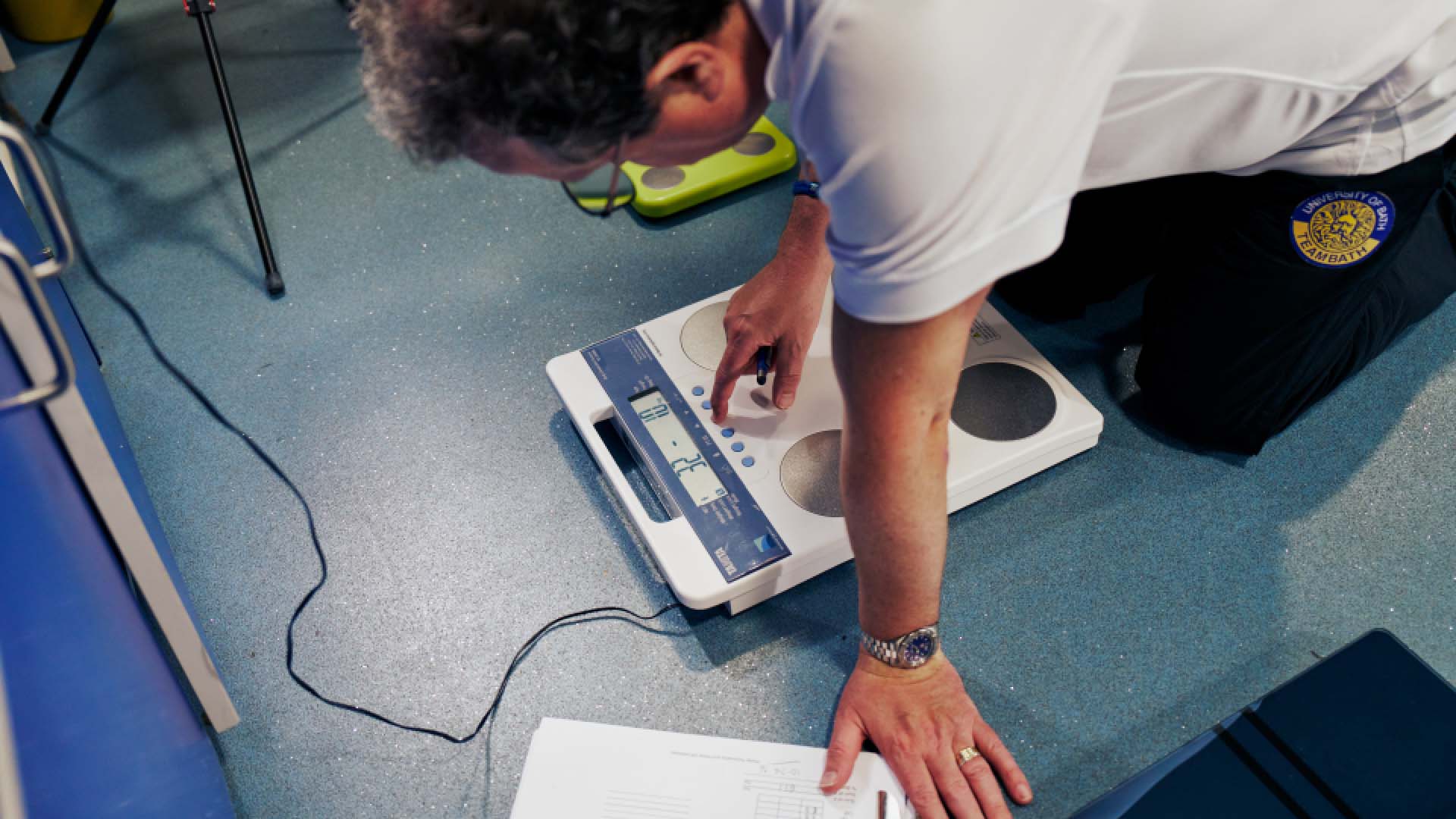
When it comes to tracking your body composition, are smart scales accurate enough to be useful?
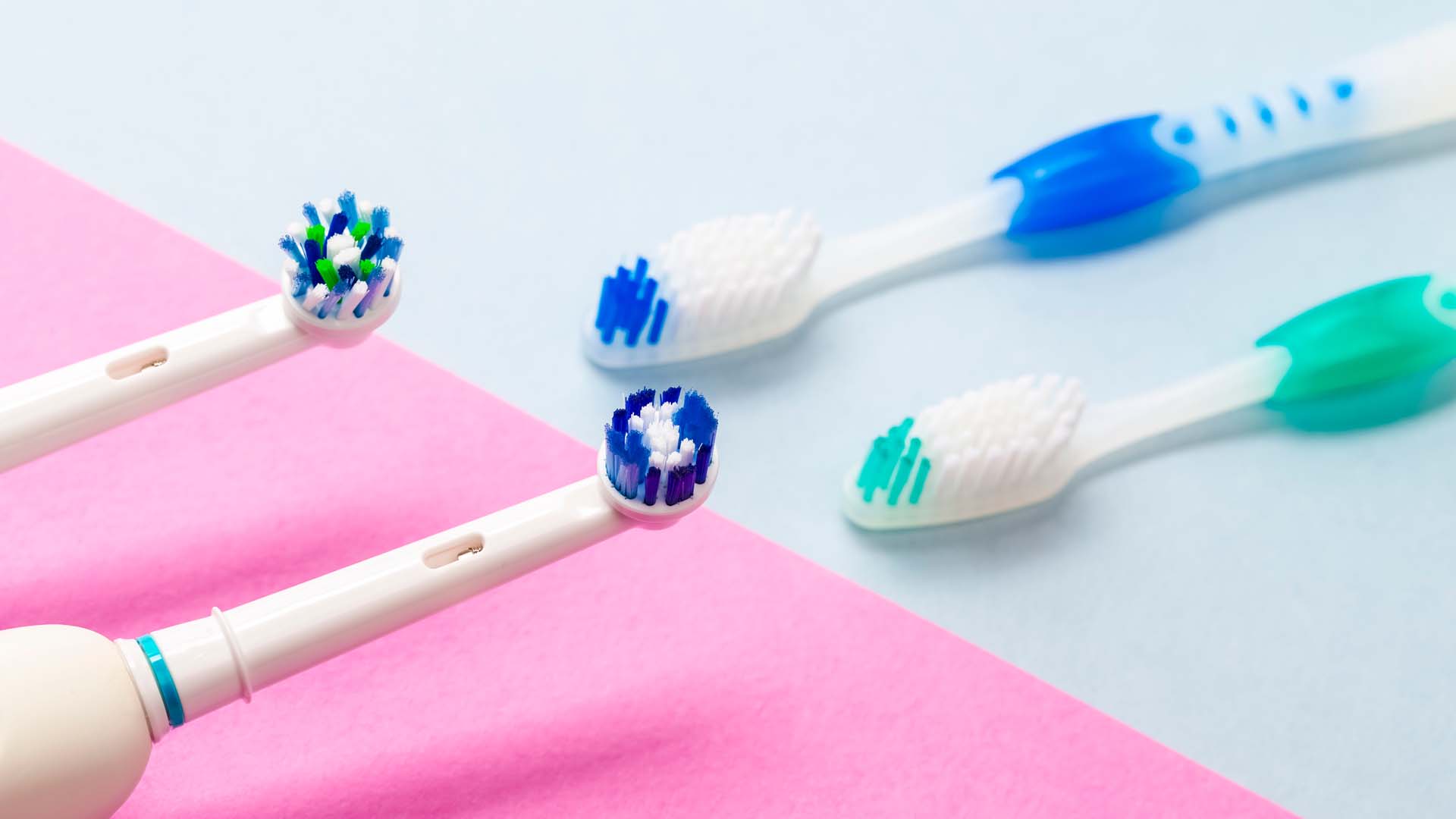
Cleaning with an electric toothbrush is much easier, especially if you have mobility problems in your hands.
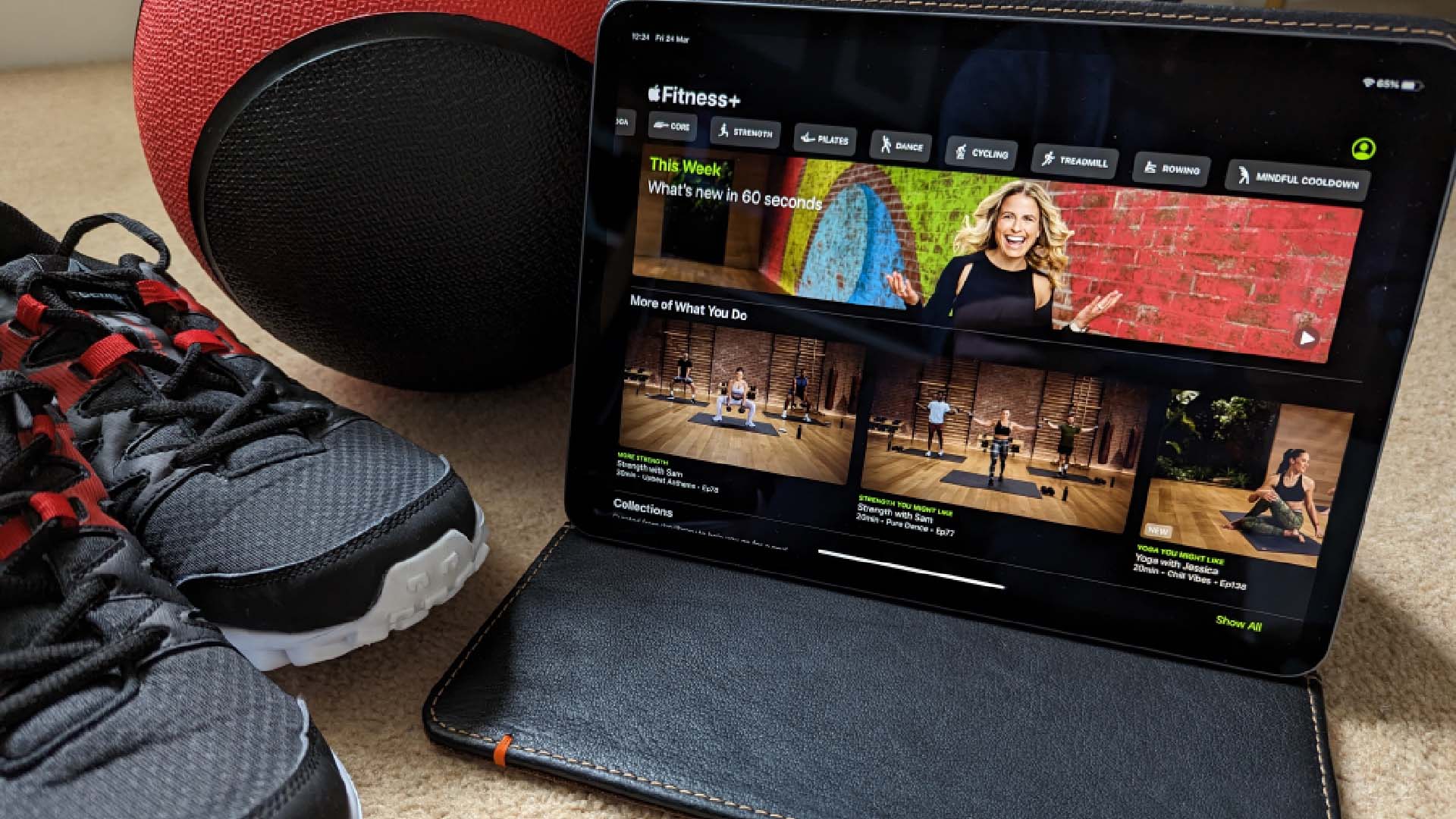
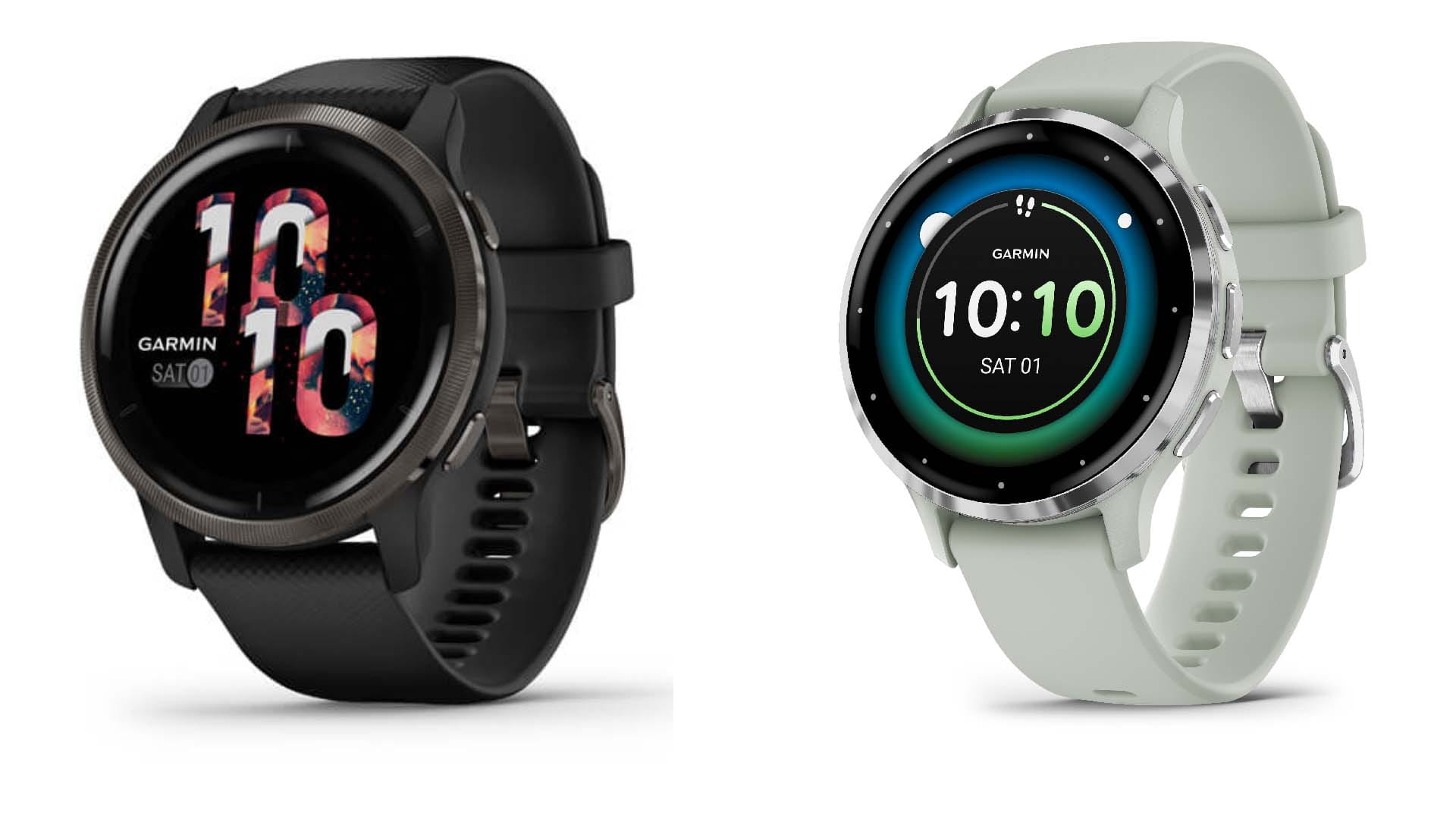
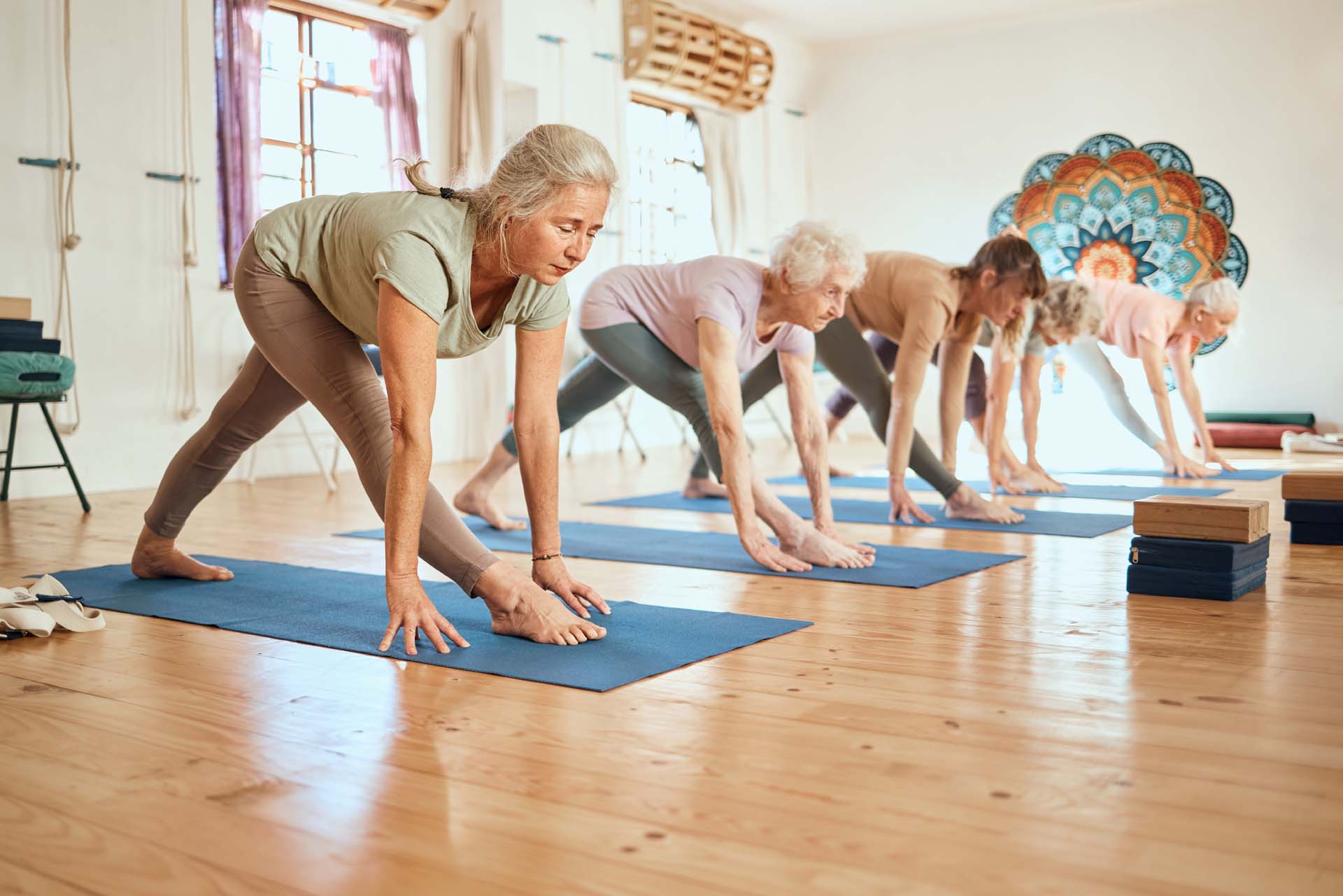
The best yoga poses to build strength and make your life more comfortable
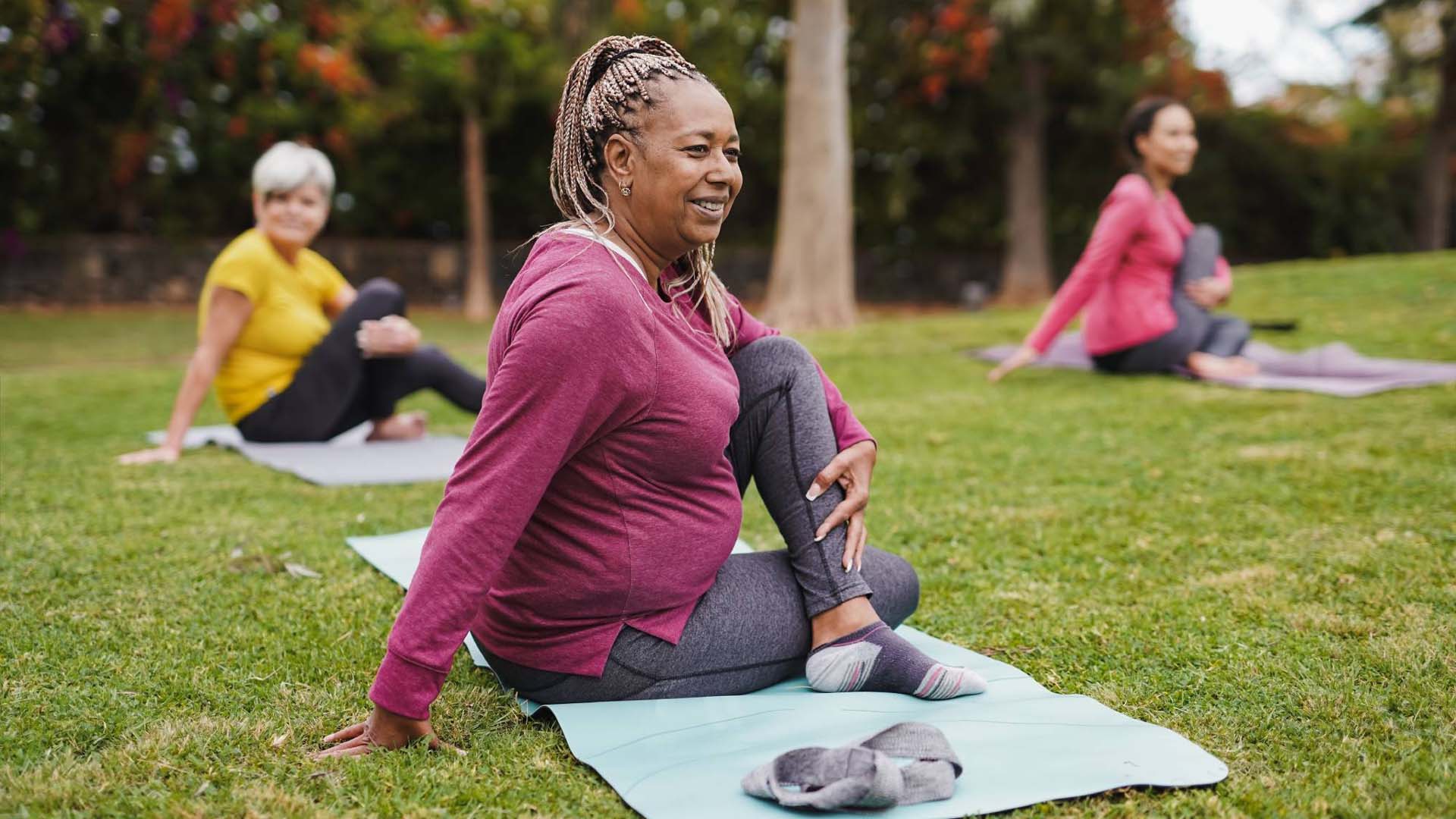
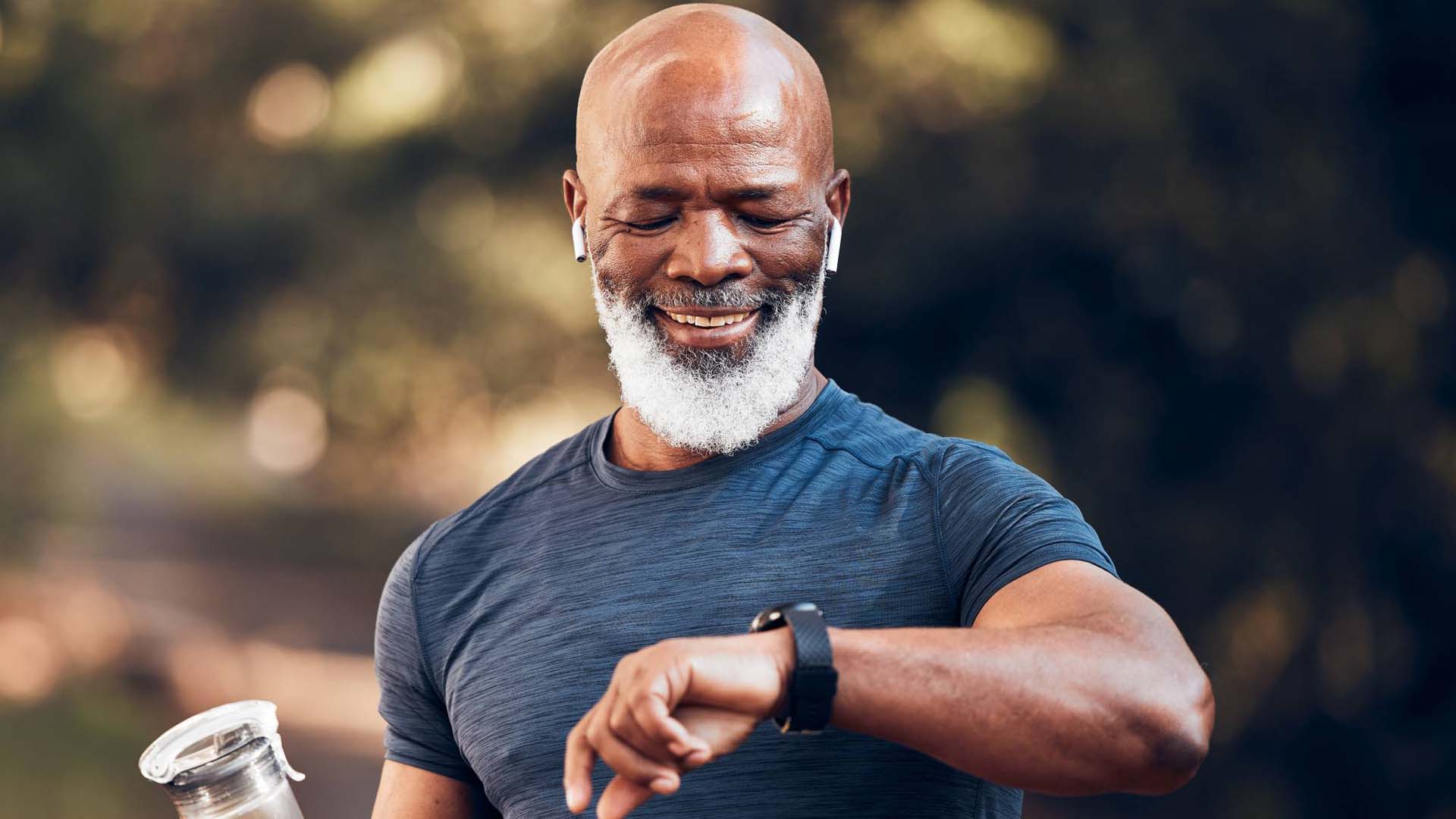
Your questions answered about what really is a good 5k time.

Your 5k questions answered and how far it is in miles, with the best UK races